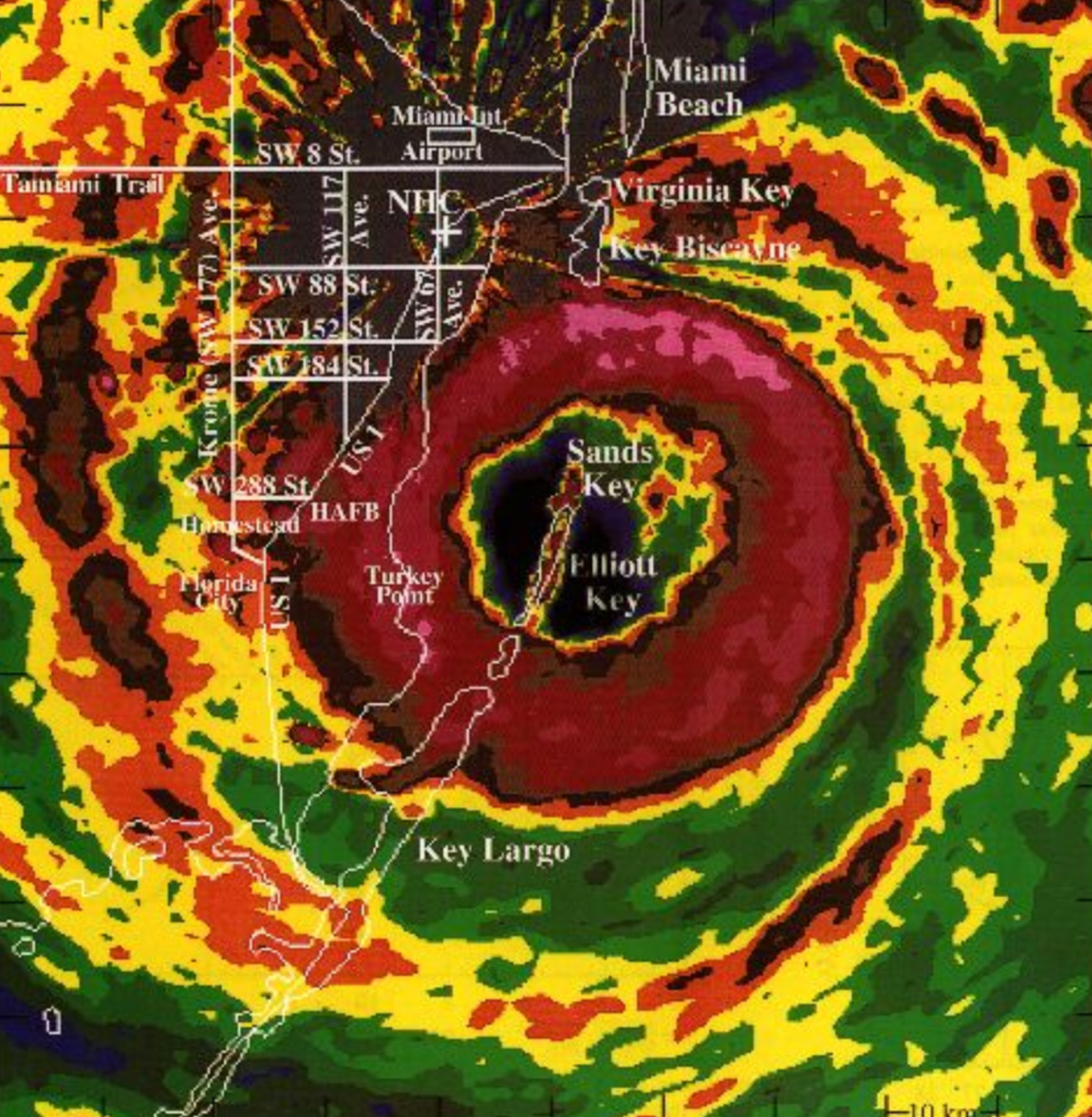[ad_1]

An iconic image has resurfaced on the 30th anniversary of Hurricane Andrew, the most powerful storm on record to hit southern Florida.
On 24th August 1992, Andrew made landfall as a rare Category 5 hurricane, killing at least 43 people and destroying more than 50,000 homes.
In the early hours of that morning, a radar image issued by the National Weather Service in Miami gave an ominous sense of what lay ahead with tightly-packed storm bands cloaking southern Florida.
It struck in South Miami-Dade County before sunrise with maximum sustained winds of 165mph, the National Oceanic and Atmospheric Administration (NOAA) reported.
The National Weather Service’s radar map of Hurricane Andrew has resurfaced on the 30th anniversary of the storm which devastated Florida and other parts of the south
(NOAA)
Hurricane Andrew caused close to $30bn in damages in the southern United States, the most expensive disaster in the country’s history until Hurricane Katrina in 2005.
The community of Homestead, just north of the Florida Keys, suffered the most devastation with more than 99 per cent of its mobile homes completely destroyed.
After barrelling through Florida, Hurricane Andrew then shifted into the Gulf of Mexico. It made a second landfall near Point Chevreuil, Louisiana two days later as a Category 3 storm with winds of 115mph.
Several factors linked to the climate crisis are fuelling more powerful, destructive hurricanes, scientists say.
Image from NOAA’s GOES-7 satellite of Hurricane Andrew approaching South Florida on August 23, 1992
(NOAA)
Greenhouse gases, largely caused by burning fossil fuels, are trapping more heat which is absorbed by the ocean. Warmer air and water powers more intense hurricane winds and sends water into the clouds, leading to more catastrophic downpours that can trigger dangerous flooding and coastal surges.
In an article looking back at Hurricane Andrew this week, Jamie Rhome, the acting director of NOAA’s National Hurricane Center, explained how the disaster spurred dramatic advancements in forecasting and planning for hurricanes.
“We have come a long way in advancing hurricane forecasts since 1992,” Mr Rhome said, in a statement.
“Sustained investments in research, modeling, satellites, aircraft observations and forecaster innovation have led to a 75 per cent improvement in hurricane track forecasts and a 50 per cent improvement in intensity forecasts.”
[ad_2]
Source link















